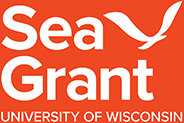New College Course Uses Lake Superior as Climate Change Example
This spring, a new course will present college students who are interested in natural resources management with examples of climate change from the Lake Superior region. The two-part course, offered through the University of Wisconsin-Stevens Point (UWSP) with funding by Wisconsin Sea Grant, is open to students from other campuses as well.


